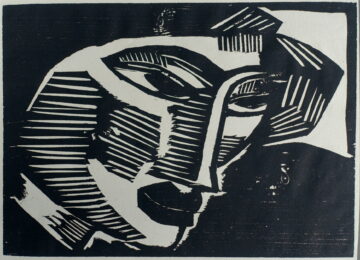


1884-1976
German painter and printmaker Karl Schmidt-Rottluff was born in Rottluff, now known as Chemnitz in December 1884 and was famed for his expressionist landscapes and nudes. He started his academic life by studying architecture, but, after meeting some other artists (Erich Heckel, Ernst Ludwig Kirchner and Fritz Bleyl), he became one of the founders of expressionist art group Die Brücke (The Bridge). He served in the army 1915-1918, moving afterwards to Berlin, where he met his wife, Emy Frisch and settled for the remainder of his life.
His style initially began in an impressionist way, but his painting ‘Windy Day’ illuminates his transition into a mature period, wherein he utilised dissonant colours over distinctly flat areas. He also experimented with using a different medium; woodcuts, like his fellow members of Die Brücke. During World Word II, due to the rise in power of the Nazis,Schmidt-Rottluff was forbidden to paint. He continued after the war, but it is thought that he never regained the power and vigour of his earlier artwork. He died in Berlin in 1876. Collections of his work can be found in the Museum of Modern Art, New York, Los Angeles County Museum of Art and many others around the world.